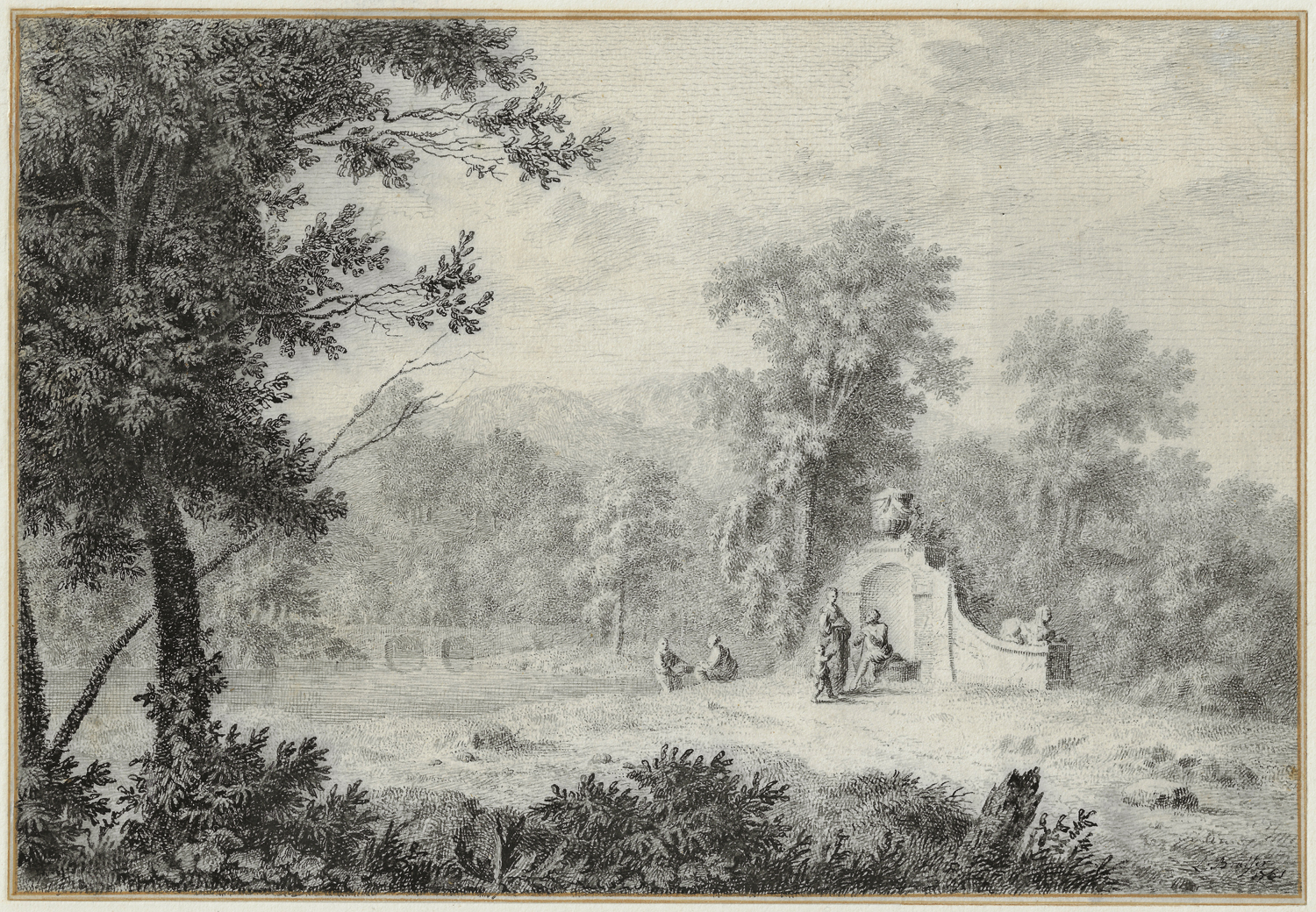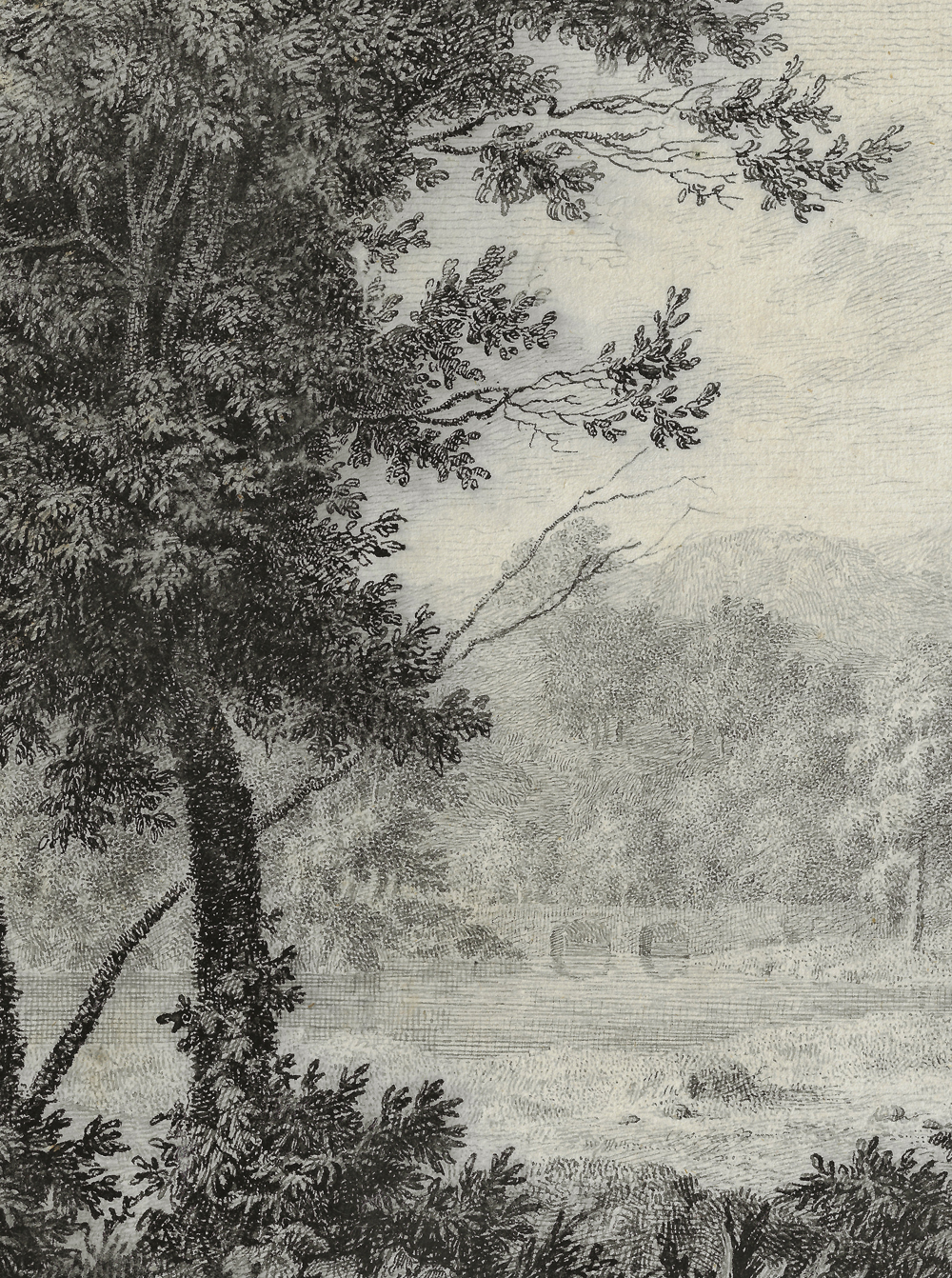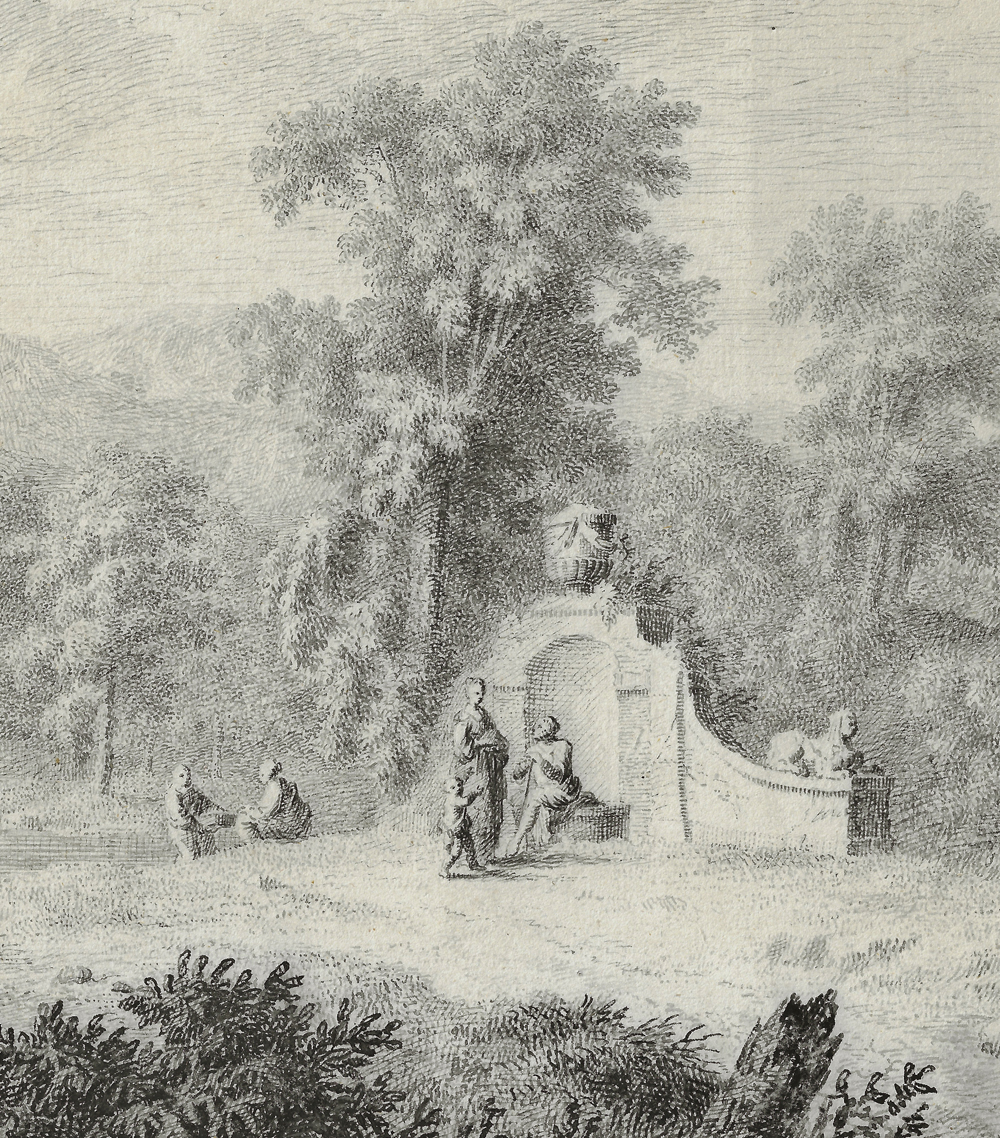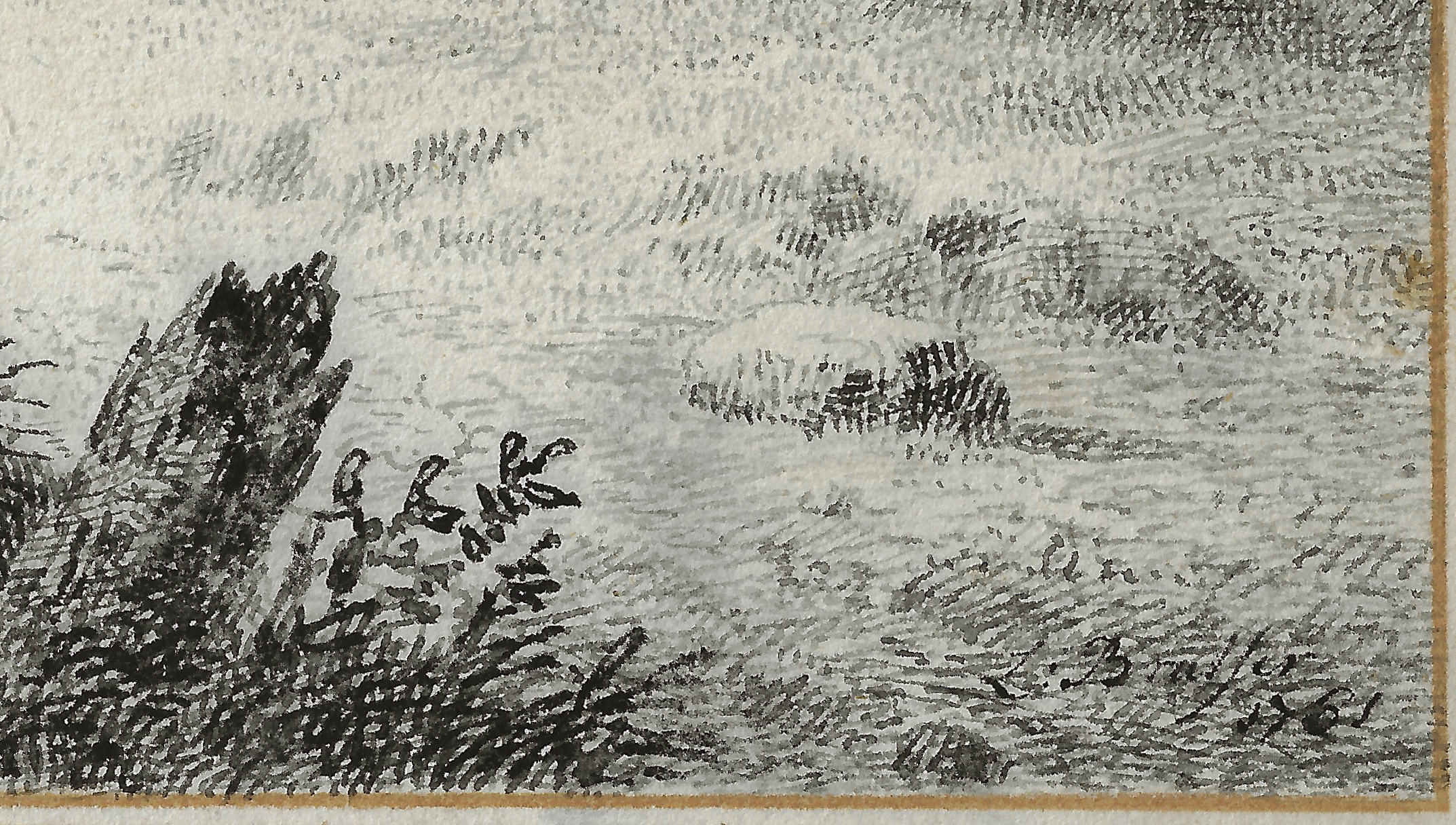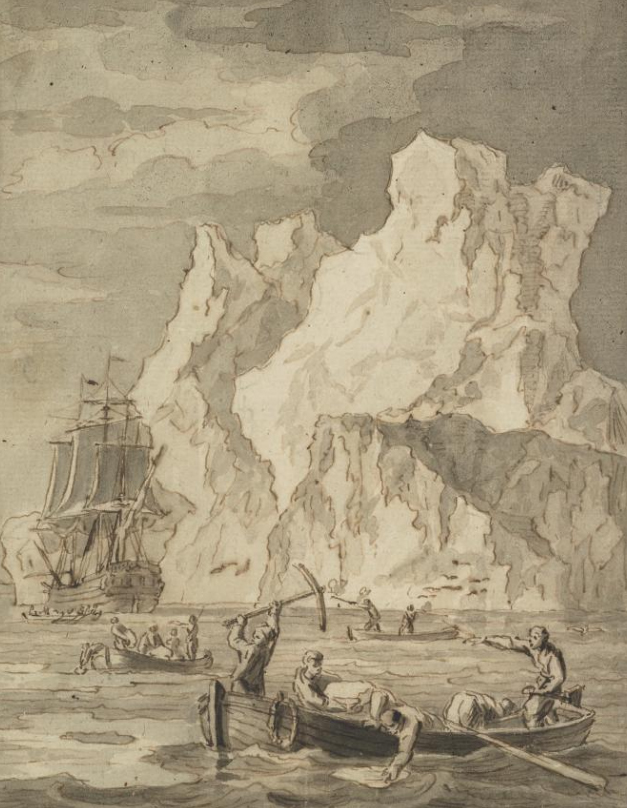LEENDERT BRASSER (Maassluis 1727 – 1793 Rotterdam)
Leendert Brasser (Maassluis 1727 – 1793 Rotterdam)
An Arcadian Landscape with Travellers Resting
Pen and black ink, brown ink framing lines, countermark IV, 237 x 345 mm (9.3 x 13.6 inch)
Signed and dated ‘L: Brasser / 1761’ (lower right)
Provenance
Private collection, France
***
Leendert Brasser was born in Maassluis in 1727 and married Christina Geertruid Vermeer in Rotterdam in October 1753; in the following year he became a burgher of that city.1 He was a member of the artists’ society ‘Hierdoor tot Hooger’. Brasser is mostly known for his reproductive prints in the etching and aquatint technique after drawings by other artists such as Jan van Goyen and Jacob de Wit, known as ‘prenttekeningen’ (print drawings). He was also active as a painter of decorative ‘behangsel’ wall hangings.
A few dozen drawings with Arcadian landscapes were included in the sale of Brasser’s own collection, held in Rotterdam by the auctioneer Vis from 7 to 11 April 1794.2 The sale also included other works by the artist, including academy, anatomical and head studies, designs for book frontispieces and illustrations, topographical views of Rotterdam and its environs, ceiling designs and copy drawings after works by artists from the seventeenth century, known as ‘natekeningen’. A rare surviving drawing by Brasser of Boats and a Ship near an Iceberg is preserved in the National Galleries of Scotland in Edinburgh (fig.).3
Despite this known group of Arcadian drawings by Brasser, and possibly more examples that he managed to sell during his lifetime, virtually none have survived to this day, with the notable exception of the present large and decorative sheet. The draughtsmanship is particularly distinctive: Brasser constructed the sheet with a myriad of dots, tiny strokes and undulating lines, almost pointillist in manner, and reflecting his activities as an engraver. Moreover, the employed black ink is reminiscent of ink used for engravings, rather than the favoured brown ink of the period. It is possible the drawing was made as an imitation of a print, as an example of virtuosity. The sculpted sphynx at the base of the shallow arched niche in the drawing is an early example of Egyptomania. The Arcadian landscape itself illustrates the fashion for English landscape architecture that evolved during the second half of the eighteenth century, more natural than the earlier Baroque symmetrical ‘French’ manner.
1. For the artist, see the biography in Saur Allgemeines Künstlerlexikon: die bildenden Künstler aller Zeiten und Völker, Munich 1992- , vol. XIII (1996) p. 669 and L. Buijnsters-Smets, ‘Jacob van Meurs (1758-1824) als boekillustrator’, Antiek 15 (1981), pp. 443-456.
2. For instance lot 186, ‘Een Arkadisch Landschap als voren [‘extra uitvoerig met de Pen geteekend’].
3. Pen and brown ink, grey wash, 168 x 131 mm, inv. no. D 1087; K. Andrews, Catalogue of Netherlandish Drawings in the National Galleris of Scotland, Edinburgh 1985, p. 12, fig. 86. Boats and a Ship near an Iceberg | National Galleries of Scotland.
